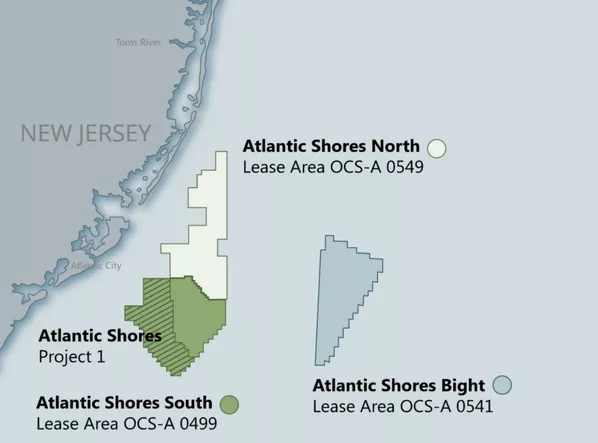
By fits and starts, wind turbine development is making progress in New Jersey. In early July, the Department of the Interior announced its approval of the 2.8 gigawatt (GW) Atlantic Shores South offshore wind project, which will create enough energy to power nearly 1 million homes.
This project will encompass two separate wind farms and will help New Jersey reach its goal of 11 GW of offshore wind power, while reducing annual CO2 emissions by 2,625 tons each year.
This summer, in the fourth round of offshore wind bid solicitations in New Jersey, Atlantic Shores submitted revised bid terms for its wind farm projects, contending these would ensure “a more resilient, competitive, and sustainable path” toward wind farm operation. Inflation, supply bottlenecks, and other factors have stalled wind farm development. Atlantic Shores’ fresh bid will undergo state review before development is allowed to proceed.
The Atlantic Shores wind farms are slated for the waters off Atlantic City, and in August, the city granted Atlantic Shores critical approval to run its transmission cables underground through tracts in the city. This involves beach area and property co-owned by Atlantic City and Green Acres.
Following construction, there would be no further impact on public access or enjoyment of the property in question. The NJ Chapter of the Sierra Club supports this use of the property.
Also this summer, Community Offshore Wind submitted a bid to build a 1.3 GW wind farm 37 miles off Barnegat Light. Attentive Energy was also a participant in the fourth round of bidding, although the nature of its bid—whether this involves more turbines or price adjustments on an earlier contract—was undisclosed. Previously, in October 2023, the company asked New Jersey for approval to build 1.3 GW of offshore wind 42 miles east of Seaside Heights.
Whale Impact Addressed
In a key development in May, the Bureau of Ocean Energy Management (BOEM) issued a final environmental impact statement for the Atlantic Shores project, ruling that despite the intrusion on the marine environment, it would be beneficial and help New Jersey meet its renewable energy goals.
Of particular concern to the BOEM investigation was the impact on the critically endangered North American right whale (NARW, pop. 340), which for years has suffered high mortality from vessel strikes and fishing gear entanglements. These threats to the NARW population will continue regardless of whether offshore wind is developed, BOEM decided.
However, efforts will be made to mitigate the impact of offshore wind installation on NARWs and other marine life, BOEM said.
“Offshore wind construction and installation, operations, and maintenance activities would be conducted with applicant-proposed and agency-required mitigation measures developed to minimize impacts on NARW. Therefore, impacts from offshore wind activities are not expected to substantially contribute to the existing major impacts from the baseline conditions,” BOEM said.
Those baseline conditions include sport and commercial fishing, cargo movement, passenger traffic, cable laying, and even beach replenishment. These adversely affect marine life, and despite the BOEM report’s intimidating length of 560 pages, readers of The Jersey Sierran are strongly encouraged to read through it for a deeper, factual understanding of the issues.
BOEM Report: https://shorturl.at/IywGp